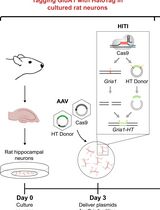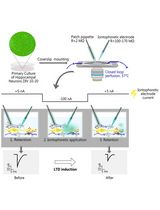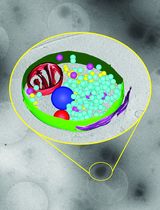- EN - English
- CN - 中文
Induction of Temporal Lobe Epilepsy in Mice with Pilocarpine
毛果芸香碱诱导小鼠颞叶癫痫
发布: 2020年02月20日第10卷第4期 DOI: 10.21769/BioProtoc.3533 浏览次数: 7189
评审: Alessandro DidonnaAnonymous reviewer(s)
Abstract
In the pilocarpine model of temporal lobe epilepsy (TLE) in rodents, systemic injections of pilocarpine induce continuous, prolonged limbic seizures, a condition termed “Status Epilepticus” (SE). With appropriate doses, many inbred strains of mice show behavioral seizures within an hour after pilocarpine is injected. With the behavioral scoring system based on a modification of the original Racine scale, one can monitor the seizures behaviorally, as they develop into more prolonged seizures and SE. SE is typically associated with damage to subsets of hippocampal neurons and other structural changes in the hippocampus and generally subsides on its own. However, more precise control of the duration of SE is commonly achieved by injecting a benzodiazepine into the mouse 1 to 3 h after the onset of SE to suppress the seizures. Several days following pilocarpine-induced SE, electrographic and behavioral seizures begin to occur spontaneously. The goal of this protocol is to reliably generate mice that develop spontaneous recurrent seizures (SRS) and show the typical neuropathological changes in the brain characteristic of severe human mesial temporal lobe epilepsy (mTLE), without high mortality. To reduce mortality, multiple subthreshold injections of pilocarpine are administered, which increases the percentage of mice developing SE without concomitant mortality. Precise control of the duration of SE (1 or 3 h) is achieved by suppressing SE with the benzodiazepine Midazolam (Versed). We have found that this protocol is an efficient means for generating mice that subsequently develop characteristics of human mTLE including high-frequency interictal spike and wave activity and SRS. In addition, we and others have shown that this protocol produces mice that show excitotoxic cell death of subsets of hippocampal GABAergic interneurons, particularly in the dentate gyrus and compensatory sprouting of excitatory projections from dentate granule cells (mossy fiber sprouting). Aspects of this protocol have been described in several of our previous publications.
Keywords: Hippocampus (海马体)Background
The mouse pilocarpine model of TLE is an experimental paradigm that has been widely used as an animal model of human mTLE. This model has been used for testing long-term efficacy of novel therapies for suppressing SRS and improving cognitive and neuropathological changes associated with severe mTLE. This rodent model of TLE recapitulates many of the neuropathological hallmarks in mTLE, including severe seizures, loss of GABAergic interneurons in the dentate gyrus, Ammon’s Horn sclerosis, and cognitive impairments (Swartz et al., 2006). Although some patients with mTLE can be treated successfully anti-convulsant medications, about one-third experience intractable pharmaco-resistant seizures and surgical removal of the seizure foci are required. If the foci are located in the mesial temporal lobes, surgical removal may not be feasible due to the role of the hippocampus in memory formation and consolidation. For these patient populations, novel treatments are needed. The cost-effective pilocarpine model of TLE in rodents provides an experimental system for testing novel therapies because a high percentage of rodents develop SRS that can be monitored by video electroencephalography (v-EEG) for weeks or months. Novel treatments that suppress seizures can also be studied for their effects on the neuropathological changes observed in this model, including mossy fiber sprouting (Henderson et al., 2014), dispersion of the granule cell layer (Scharfman et al., 2000), and aberrant neurogenesis (Parent et al., 1997).
Pilocarpine hydrochloride (referred to as pilocarpine) is a drug that directly stimulates muscarinic cholinergic receptors in the central nervous system and in the parasympathetic branch of the peripheral nervous system. As a parasympathomimetic drug, pilocarpine induces exocrine gland secretion and stimulates smooth muscle contractions in the gut and secretory glands. It is also a chemoconvulsant that is used to elicit limbic seizures in rodents. Pilocarpine is typically administered by subcutaneous (Walter et al., 2007) or intraperitoneal (i.p.) injections in rodents to induce a condition of continuous generalized seizures, called Status Epilepticus (SE). After the mice develop SE in this model, the experimenter terminates the seizures by injecting a sedative dose of benzodiazepine, a class of drugs that acts on gamma-aminobutyric acid-A (GABA-A) receptors in the brain. Typically, rodents that have experienced one or more hours of SE, will develop TLE with high-frequency interictal spike, wave activity, and SRS (Mello et al., 1993; Wozny et al., 2003; Knopp et al., 2005; Henderson et al., 2014).
In a comprehensive study of the multiple factors contributing to the development of SRS in the rodent pilocarpine model, the strongest correlations were found between dentate gyrus GABAergic neuron loss and seizure frequency (i.e., disease severity) (Buckmaster et al., 2017). Many human TLE patients and rodents subjected to pilocarpine-induce SE show loss of somatostatin-expressing GABAergic interneurons in the hippocampus (Robbins et al., 1991; Borges et al., 2003; Hoffman et al., 2016). In the mouse pilocarpine model, GABAergic interneurons in the hilus of the dentate gyrus and CA1 that co-express somatostatin and Striatal Enriched Tyrosine Phosphatase (STEP) were found to be highly vulnerable to SE (Buckmaster and Jongen-Relo, 1999; Choi et al., 2007; Zhang et al., 2009). Associated with the loss of GABAergic interneurons, studies reported reduced synaptic inhibition (Kobayashi and Buckmaster, 2003), despite the fact that many of the GABAergic interneurons in the dentate gyrus and CA1 that survive after SE sprout additional inhibitory projections (Wittner et al., 2002; Bausch, 2005; Zhang et al., 2009; Thind et al., 2010). Loss of both somatic and distal dendritic GABAergic inhibition to granule cells occurs shortly after SE, but precedes the development of SRS, suggesting that loss of GABAergic inhibition onto granule cells in the dentate gyrus is an important predictor of whether TLE will develop (Kobayashi and Buckmaster, 2003).
Because of the strong link between loss of GABAergic inhibition and development of TLE, we and other groups have tested whether transplantation of GABAergic progenitors, from either the embryonic mouse forebrain or generated in vitro from human pluripotent stem cells, suppresses pilocarpine-induced TLE (Maisano et al., 2012; Henderson et al., 2014; Anderson et al., 2018). Additionally, recent work shows that this model can be used in combination with molecular and electrophysiological approaches, such as retroviral labeling and optogenetics, to evaluate cellular mechanisms responsible for seizure suppression following transplantation (Gupta et al., 2019). The methods detailed in this protocol for induction of SE in both male and female rodents can be adapted to different inbred strains of mice with low mortality; a high incidence of the mice that experience SE will subsequently develop SRS and the typical histopathological hallmarks of TLE (Walter et al., 2007; Henderson et al., 2014; Anderson et al., 2018; Gupta et al., 2019).
In the following protocol, we provide the detailed methods for the successful induction of SE with multiple subthreshold doses of pilocarpine in inbred strains of mice. This method builds upon number of prior studies. In a comparison of 8 inbred strains of mice, Schauwecker and colleagues found significant differences in the susceptibility to pilocarpine, mortality and neuropathological changes after SE (Schauwecker, 2012). Doses ranging between 300 and 400 mg/kg were reported to induce SE successfully. Higher single doses of pilocarpine were correlated with more successful induction of SE but also increased mortality (Turski et al., 1984; Cavalheiro et al., 1991; Curia et al., 2008; Buckmaster and Haney, 2012; Kelly and Coulter, 2017). In contrast, multiple subthreshold doses of pilocarpine were effective for inducing SE and SRS, with much lower mortality rates (Glien et al., 2001; Groticke et al., 2007).
Materials and Reagents
- Sterile disposable bottle top filter (0.2 µm) (Thermo Scientific, catalog number: 5680020)
- 27 G needles (BD Biosciences, catalog number: 305109)
- 1cc syringes (BD Biosciences, Luer-Lok tip, catalog number: 309628)
- Pipette tips (Axygen, catalog number: 14-222-721)
- Puralube Vet Ophthalmic Ointment (Dechra, catalog number: 17033-211-38)
- Eppendorf tubes (VWR, catalog number: 89000-030)
- Cotton tipped applicators (Thomas Scientific, catalog number: 1213Q08)
- Nesting square (Ancare, catalog number: NES3600)
- Paper house (Shepherd specialty papers, catalog number: Shepherd shack reg)
- Lab markers (Sharpie, Amazon, Permanent ultrafine black 12 count)
- C57Bl/6NHsd mice (Envigo, catalog number: 47)
- Isothesia (Isoflurane) (Henry Schein, catalog number: SKU 029405)
- 2% topical lidocaine (Hi Tech, catalog number: 00603-1393-64)
- Povidone iodine (CVS, catalog number: 955338)
- Sodium chloride (NaCl) (Sigma, catalog number: S9888-5KG)
- Scopolamine methyl bromide (Sigma, catalog number: S85002), 4 °C, dispose 9 months after opening, 4 °C
- Pilocarpine hydrochloride (Sigma, catalog number: P6503-SG), dispose 2 months after opening, 4 °C
- Midazolam (Henry Schein, catalog number: 17478052410), dispose 2 months after opening, store at RT
- Sterile lactated ringers (Henry Schein, catalog number: 065888), store at RT
- Square container (Rubbermaid, catalog number: 1776401 1-1/4-Cup square container)
- 0.9% Saline solution (see Recipes)
- Scopolamine stock solution (see Recipes)
- Scopolamine working solution (see Recipes)
- Pilocarpine stock solution (see Recipes)
Equipment
- Calculator (Casio, catalog number: FX-991EX)
- P1000 pipette (Eppendorf, catalog number: 2231000601)
- P200 pipette (Eppendorf, catalog number: 2231000601)
- Weighing balance (Metler, catalog number: AE 240)
- Vortex (Fisher Scientific, Genie 2, catalog number: 12-812)
- Heating pad (Sunbeam, catalog number: 731-500)
- Barnstead Nanopure (Thermo Fisher Scientific, catalog number: D11921)
- Silver wire (World Precision Instruments, catalog number: AGW1030)
- Six-pin connectors (Allied Electronics, catalog number: R1023090
- Stainless steel screws (Plastics One, catalog number: 00-96x3-32)
- Silver print (GC Electronics, catalog number: 22-023)
- Dental acrylic cement (Lang Dental Manufacturing, catalog number: 0830 Fibred Pink)
- Timer (Fisher Scientific, catalog number: 14-648-17)
- Preamplifier (Pinnacle Technology, catalog number: 8406-SE4)
- Electrical commutator (Pinnacle Technology, catalog number: 8408)
- Data acquisition device (Pinnacle Technology, catalog number: 8401)
- Automated stereotaxic injection system (Stoelting Quintessential, catalog number: 53311)
- Charcoal filter (VetEquip, catalog number: 931401)
- Dissecting microscope (Zeiss OPMI 6, catalog number: 93088)
Software
- Sirenia Seizure Pro Software, including Sirenia Acquisition and Sirenia Seizure Detection modules (Pinnacle Technology, software version 2.0.5; https://www.pinnaclet.com/seizurePRO.html)
Procedure
文章信息
版权信息
© 2020 The Authors; exclusive licensee Bio-protocol LLC.
如何引用
Readers should cite both the Bio-protocol article and the original research article where this protocol was used:
- Arshad, M. N. and Naegele, J. R. (2020). Induction of Temporal Lobe Epilepsy in Mice with Pilocarpine. Bio-protocol 10(4): e3533. DOI: 10.21769/BioProtoc.3533.
- Gupta, J., Bromwich, M., Radell, J., Arshad, M. N., Gonzalez, S., Luikart, B. W., Aaron, G. B. and Naegele, J. R. (2019). Restrained dendritic growth of adult-born granule cells innervated by transplanted fetal GABAergic interneurons in mice with temporal lobe epilepsy. eNeuro 6(2): pii: ENEURO.0110-18.2019.
分类
神经科学 > 神经系统疾病 > 动物模型
神经科学 > 细胞机理 > 突触生理学
您对这篇实验方法有问题吗?
在此处发布您的问题,我们将邀请本文作者来回答。同时,我们会将您的问题发布到Bio-protocol Exchange,以便寻求社区成员的帮助。
提问指南
+ 问题描述
写下详细的问题描述,包括所有有助于他人回答您问题的信息(例如实验过程、条件和相关图像等)。
Share
Bluesky
X
Copy link














